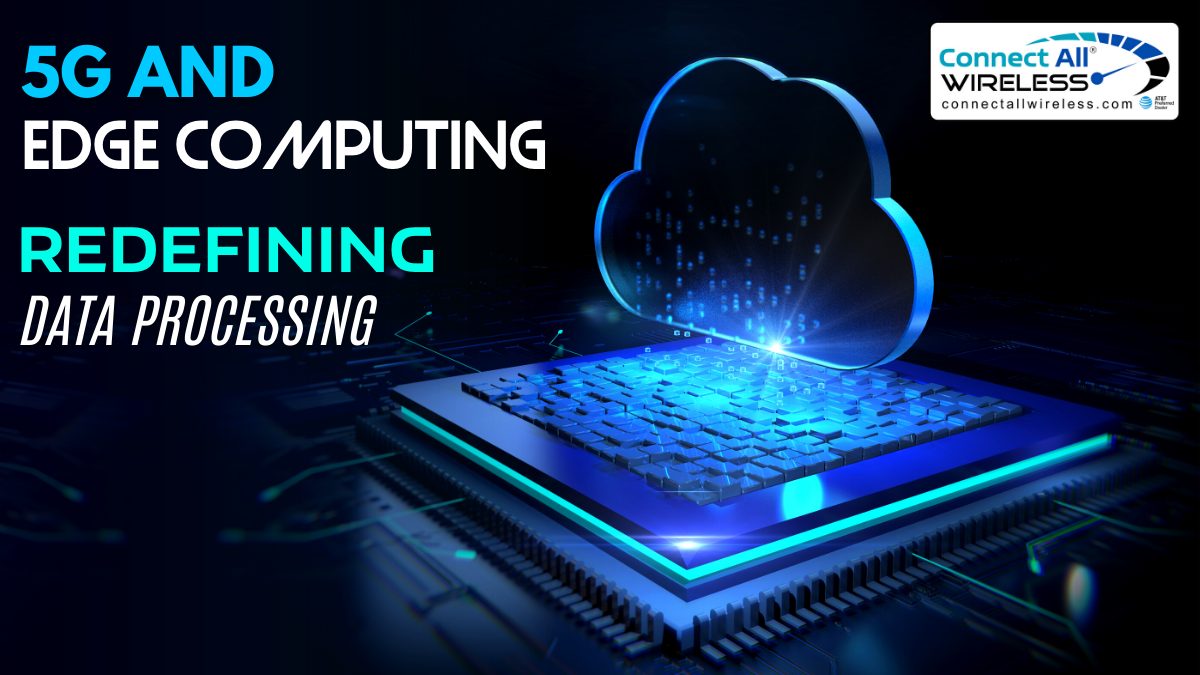
In the ever-evolving landscape of technology, the fusion of 5G and edge computing is ushering in a new era of data processing capabilities. This dynamic duo is not just an upgrade; it's a revolutionary shift that promises to redefine the way we process and leverage data across various industries.
1. The Need for Speed:
5G's Lightning-Fast Connectivity: At the heart of this transformation is 5G, the fifth generation of wireless technology. It brings unprecedented speed and bandwidth, enabling near-instantaneous communication between devices. With data transfer rates reaching up to 10 gigabits per second, 5G is not merely an incremental improvement; it's a quantum leap from its predecessor.
This newfound speed is a game-changer for industries that demand real-time data processing, such as healthcare, autonomous vehicles, and augmented reality. Imagine a world where surgeries can be performed remotely with minimal latency or self-driving cars making split-second decisions based on up-to-the-moment data. 5G makes these scenarios not just plausible but achievable.
2. The Rise of Edge Computing:
Decentralized Data Processing: While 5G provides the highway for data, edge computing is the decentralized pit stop that brings processing power closer to the data source. Traditional cloud computing involves sending data to a central server for processing, leading to latency and potential bottlenecks. Edge computing, on the other hand, distributes this processing power to the edge of the network, reducing latency and enhancing overall efficiency.
Consider a smart city with countless IoT devices collecting data. Instead of sending all this information to a distant cloud server, edge computing allows the data to be processed locally, enabling quicker response times and reduced reliance on a centralized infrastructure. This shift is particularly advantageous in applications that require real-time decision-making, such as smart grids and industrial automation.
3. Synergy in Action:
Powerful Synergy Unleashed: The true magic happens when 5G and edge computing join forces. This synergy results in a powerful combination that addresses the limitations of each technology individually. With 5G's rapid connectivity and edge computing's localized processing, we have the infrastructure for transformative applications across various domains.
For instance, in the realm of augmented reality (AR), this synergy enables seamless experiences with minimal lag. Whether it's immersive gaming, remote collaboration, or training simulations, the combination of 5G and edge computing ensures that the data processing happens in real-time, enhancing user experiences to unprecedented levels.
4. Transforming Industries:
Healthcare Revolutionized: One industry that stands to gain significantly from this convergence is healthcare. With 5G-enabled devices and edge computing at hospitals, medical professionals can access patient data instantly, regardless of their physical location. This capability is a game-changer in emergency situations, where split-second decisions can be a matter of life and death.
Moreover, the integration of 5G and edge computing facilitates the rise of telemedicine, enabling remote patient monitoring and consultations with minimal latency. Patients in remote areas can now access the expertise of specialists without the need for physical travel.
5. Challenges and Considerations:
Security and Infrastructure Concerns: While the marriage of 5G and edge computing brings unparalleled benefits, it also raises concerns, particularly in the realms of security and infrastructure. The decentralized nature of edge computing demands robust security measures to safeguard data at various processing points. Additionally, the infrastructure needs to evolve to support the increased demand for localized processing, which may pose challenges for certain regions.
Conclusion:
In conclusion, the fusion of 5G and edge computing marks a paradigm shift in data processing, presenting a transformative landscape with far-reaching implications. This synergy between rapid 5G internet and localized processing capabilities is redefining industries and enhancing real-time applications. As we witness the revolution unfold, it's essential to recognize the impact on regions like Michigan, where the integration of 5G and edge computing can propel technological advancements. The promise of 5G internet in Michigan heralds a future where the state becomes a hub for innovation, benefiting sectors such as healthcare, manufacturing, and smart infrastructure.
However, as we embrace this technological leap, addressing security and infrastructure concerns is crucial to ensure a responsible and secure integration. The stage is set for Michigan to harness the power of 5G and edge computing, ushering in an era where data processing transcends boundaries and catalyzes progress for the state and its residents. The evolution is not just about faster connectivity; it's about forging a path toward a more connected, efficient, and empowered future in the heart of the 5G revolution.

No comments yet